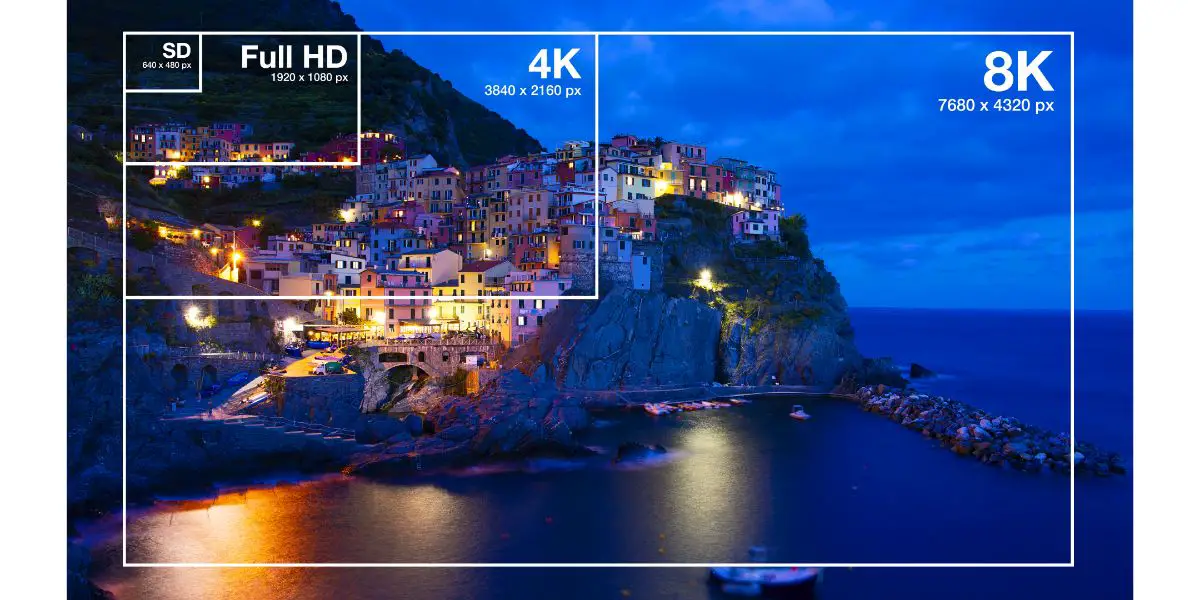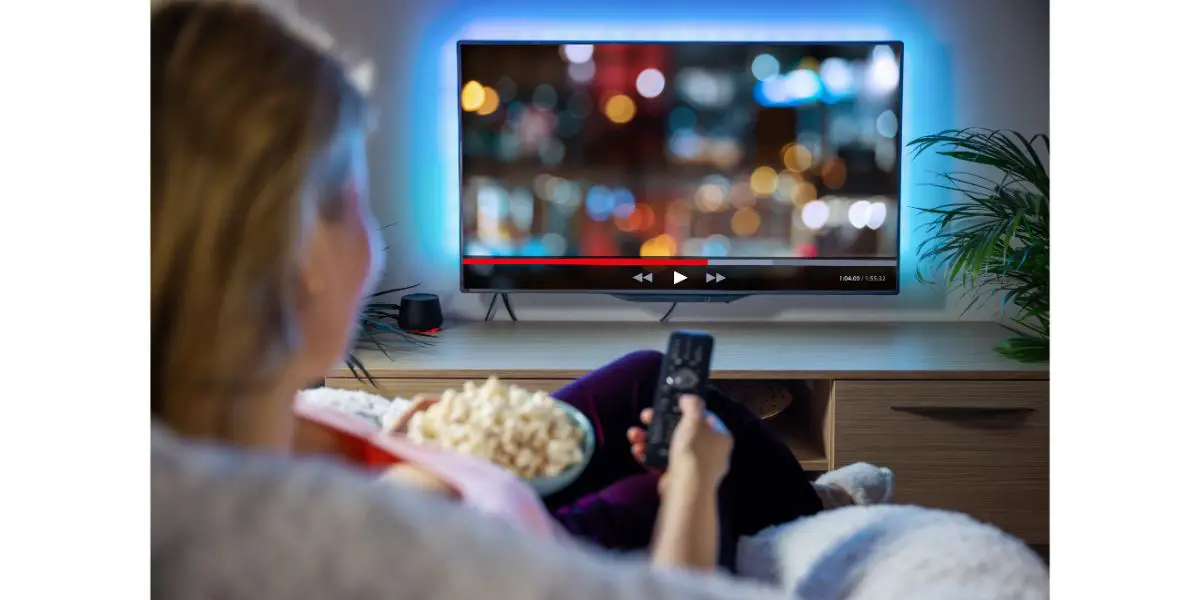Disclaimer: This post may contain affiliate links, meaning we get a small commission if you make a purchase through our links, at no cost to you. For more information, please visit our Disclaimer Page.
One of the most important aspects of any monitor is its screen resolution. A high-resolution screen provides better image quality, which is pleasant to look at, especially if you spend a lot of time with your eyes on the monitor. However, what does high resolution mean for your eyes and their health?
Table of Contents
Why High-Res Screens Are Better for Your Eyes
The technology of monitors and television screens has advanced immensely in the last few decades, providing maximum quality for the best possible viewing experience. People now spend much more time in front of their computer screens, so screen manufacturers have realized that they need to pay special attention to the health impact of their products.
When a screen has a high resolution, it contains more pixels per inch. This means that every image on the screen is more detailed, creating a sharper picture overall. Moreover, today’s high-resolution screens include several additional aspects that are supposed to help your eyesight.
Let’s see all the reasons why high-resolution screens are better for your eyes than the alternative:
More Detailed Images
The first and main advantage of high-resolution screens is their higher number of pixels per inch, which makes images clearer and more detailed.
As a result, you don’t have to strain your eyes to see the smaller elements of the images on your screen. This is especially important if you play video games or work with photo or video editing.
Low Blue Light Technology
Most recent high-resolution screens include low blue light technology, which reduces the amount of blue light your screen emits. This technology is essential for people who need to spend a lot of time with their eyes on their monitors.
You can activate the low blue light setting in most monitors by going into the on-screen display menu, which you can navigate by pressing the buttons on the side or back of the monitor. Alternatively, you can turn on the Night Light feature in the Windows settings, which achieves a similar effect.
The blue light emitted by your computer screen is especially harmful because it causes fatigue and strain on sensitive eyes. It is one of the main reasons some people have trouble falling asleep after spending too much time on their screens.
High-resolution screens allow you to lower the amount of blue light the monitor emits to reduce strain on your eyes, especially at night. You can find the option to lower blue light levels on your on-screen display menu.
No Flickering Issues
Some low-resolution monitors often show issues like flickering, blinking, or flashes on your screen, which are incredibly harmful to your eyesight. Your eyes get tired much more quickly, and they need time to recover away from your screen if exposed to constant flickering.
This issue may happen to many types of screens—even the high-resolution ones if there are issues with the power supply or damaged cables. However, lower-resolution screens are more prone to this problem because they flicker when they can’t handle a higher-resolution image.
Adaptive Brightness
In addition to crisper and clearer image quality, high-resolution screens include a crucial setting to help your eyesight immensely.
Most high-resolution screens include adaptive brightness, a feature that adapts the brightness emitted from your screen in response to the amount of light around you.
When the environment around you is very bright, your higher resolution screen will adapt, increasing the brightness level to allow you to see it clearly. When it gets dark around you, your screen will respond by lowering the brightness level so that your eyes don’t get strained by a super bright screen in a low-light environment.
What Is the Best Screen Resolution for Your Eyesight?
High resolution is a very broad term that includes several types of resolutions. Do more pixels always mean less strain on your eyes, or does it stop making a difference after a certain threshold?
The best resolution for your eyesight is 4K. Anything considered high-resolution is adequate for your eyes, but the more pixels your monitor can fit, the clearer the images will be, putting less strain on your eyesight.
Studies have also shown that OLED screens are healthier for your eyesight than LED or LCD screens. These screens have a wide range of colors and much better color contrast than LED or LCD monitors. If you can, choose an OLED screen.
The point of choosing a high resolution for the health of your eyes is to go above their ability to discriminate pixels. That means that if your eyes can’t see the difference between 1080p and 4K, no resolution will strain your eyes more than the other.
Most people can feel the difference between 4K and 1080p, at least in a large enough monitor, so it makes sense to go for a 4K if you have the budget. However, anything above that is probably pointless. It’s impossible to distinguish between a 4K and an 8K screen.
Even if you don’t play much video games or work with images, it may be worth it to go for a 4K monitor. They’re getting cheaper every day and more and more content is becoming available in 4K. Even while browsing the internet, text will look crisper and you’ll be able to enjoy many of your favorite shows and YouTube channels with extra sharpness.
Other Factors That Might Affect Your Eyes
Resolution is one of the main ways in which your screen affects your eyesight, but it’s not everything. A high-resolution screen can still damage your eyesight significantly if you’re not careful about other important aspects.
- Brightness. Too high or too low brightness can hurt your eyes and even cause permanent damage. The brightness of the environment around you should dictate the brightness of your screen.
- Contrast. Older, low-resolution screens are known to create pixelated images with high contrast, which is less than ideal for your eyesight.
- Blue light. As I already explained, the amount of blue light your screen emits should be minimal to reduce eye fatigue. Thankfully, most high-res screens already have options for lowering blue light.
- Glare. The glare you get from your screen is incredibly taxing for your eyes and contributes to temporary fatigue and irritation. High-res screens are typically better at avoiding this problem.
- Distance from the screen. As good as your screen is, it may do nothing for your eyes unless you know how to sit in front of it. You should keep your eyes on the right level and distance in front of your screen so that you don’t strain them.
- Rest from the screen. Try to take breaks from the screen for at least 5–10 minutes every hour.
Conclusion
Generally speaking, higher-resolution screens will always be better and healthier for your eyes. A high resolution means that your screen can fit more pixels, making the display clearer and crisper and helping your eyes see better.
High-resolution monitors usually also come with other features that help your eyes, such as low blue light technology, less flickering, and adaptive brightness.
That said, resolution is not the most important factor when taking care of your eyes. Things like lowering brightness and taking frequent rests from the screen have a much larger impact.


